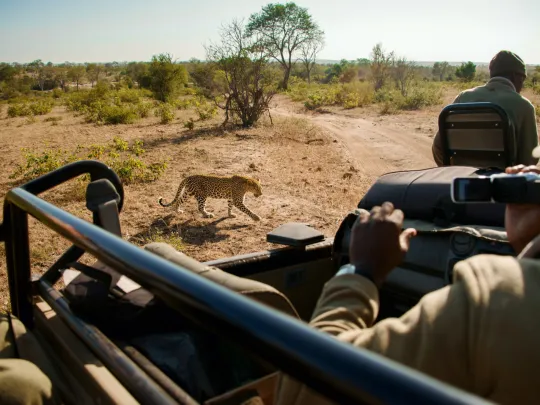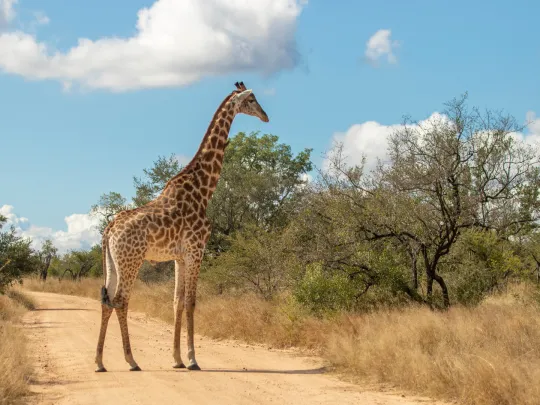6 More Reasons to Love Buffalo – Fascinating Facts About Africa's Cape Buffalo
From their vital role in maintaining game reserve ecosystems to their fascinating herd dynamics, buffalos are truly one of Africa's most intriguing species. If you enjoyed our deep dive into why buffalos are among the snarkiest beasts on the planet, here are six more reasons to love them—even more than you already do.
1. Cape Buffalo Are One of Five Subspecies

The formidable Cape buffalo
The Cape buffalo (Syncerus caffer caffer) is the largest and most common buffalo in Africa, found across South Africa, Kenya, Tanzania, Zambia, and Zimbabwe. But did you know that there are four additional subspecies?
The Dwarf buffalo, Forest (or Congo) buffalo, Sudan buffalo, and Nile buffalo each have distinct adaptations based on their habitats. While Cape buffalo thrive in open savannas, some of their relatives prefer dense forests or wetland environments.
Many people confuse Cape buffalo with water buffalo, but they are entirely different species. Water buffalo (Bubalus bubalis) are native to Asia and have been domesticated for thousands of years, whereas Cape buffalo remain untamed, known for their wild and unpredictable nature.
2. Cape Buffalo Are Led by a Matriarch

The matriach leads the herd
Buffalos are highly social and form large herds, especially in the dry season when resources become scarce. These herds, which can range from a few dozen to several thousand individuals, operate under a fascinating leadership system.
A dominant female, known as the matriarch, leads the herd, guiding them to the best grazing areas and water sources. Meanwhile, mature males compete for dominance, with size, strength, and experience determining their ranking. Younger bulls often form bachelor groups until they are strong enough to challenge for a place within the main herd.
Unlike many other herd animals where males take the lead, buffalo herds rely on their matriarch's knowledge and experience to navigate the ever-changing African wilderness
3. Cape Buffalo Are Friends With Oxpeckers

Oxpeckers act as early warning alarm systems
Buffalos have a fascinating symbiotic relationship with oxpecker birds. Ticks and parasites are a constant nuisance for buffalo, but oxpeckers help by feasting on these unwanted hitchhikers, providing a natural pest-control service.
But that's not all—oxpeckers act as an early warning system for buffalo herds. With their sharp eyesight and keen senses, they alert buffalo to approaching predators by emitting warning calls and fluttering into the air.
So, next time you see a buffalo covered in little red-billed birds, remember—it's not just hitching a ride. It's benefiting from a built-in security system!
4. Buffalos Help Shape Game Reserve Ecosystems

Landscape artist at your service
Cape buffalo are essential ecosystem engineers, playing a vital role in maintaining Africa's grasslands. Their constant grazing prevents bush encroachment, keeping landscapes open and diverse. This, in turn, supports other herbivores like zebras, wildebeest, and antelope, which depend on short grasses for feeding.
Additionally, buffalos' sheer size and movement patterns help create natural pathways through dense vegetation, providing easier access for smaller animals and even influencing predator movements. In many game reserves, their presence ensures a balanced, thriving ecosystem.
5. Buffalos Are Resilient to Harsh Conditions

Cape buffalo during the dry winter season
Buffalos are among Africa's most adaptable large mammals, capable of thriving in various environments, from open savannas to wetlands and woodlands. They can withstand extreme heat, prolonged droughts, and seasonal flooding—thanks to their ability to travel long distances for water and adjust their feeding habits when resources are scarce.
Their resilience makes them one of the most widespread and successful large herbivores on the continent. Unlike species that struggle to cope with environmental changes, buffalos continue to thrive even in challenging conditions.
6. Social Decision Makers

Which way now?
While buffalo herds are led by a dominant female—the matriarch—she does not dictate the herd's movements alone. Instead, buffalos engage in a fascinating form of democratic decision-making.
During resting periods, females stand up, shuffle around, and then sit back down, each time facing a direction they believe the herd should move. Once a consensus is reached, the matriarch takes the lead, guiding the herd in the chosen direction.
This unique combination of collective decision-making and matriarchal leadership ensures the herd's movements are based on shared wisdom, benefiting both experienced members and younger buffalos navigating their environment.
Did You Know? Buffalos Have the Best Collective Noun!

An obstinacy of buffalo on the move
Buffalos aren't just called a "herd." They're also known as a "gang" or, best of all, an "obstinacy" of buffalo!
Considering their stubborn nature, strong bonds, and fearless attitude, this collective noun is a perfect fit. Few animals embody the word "obstinacy" as well as these powerful creatures, known for standing their ground—even against lions!
Final Thoughts

Why so grumpy?
Buffalos are so much more than just powerful, grumpy-looking grazers. They play a crucial role in Africa's ecosystems, showcase fascinating social dynamics, and even have unexpected friendships with birds.
So, the next time you see a herd of buffalo on safari, take a moment to appreciate these underrated giants—you might just come away with a newfound respect for them!
Love learning about buffalo? Don't miss the first part of this series! Check out 6 Reasons Buffalos May Be the Snarkiest Beasts on the Planet to discover more about these formidable creatures.
Want to see buffalo in the wild? Kruger National Park is one of the best places to encounter these powerful giants. Join us on safari and see them up close in their natural habitat! Explore our Kruger Park safaris and start planning your adventure!
You may also want to look at

6 Reasons Buffalos May be the Snarkiest Beasts on the Planet
Buffalos don't just roam Africa's wild landscapes—they own them. Known for their imposing presence and fearless attitude, these powerful creatures have earned their spot among the Big Five. But are they really the most dangerous animals on safari, or is their reputation exaggerated? Dive into the world of the African buffalo and uncover six reasons why they might just be the snarkiest beasts on the planet.

Why South Africa is Tops for Great Safari Value
Wanting to go on safari but not sure how far your foreign currency will stretch? Then good news for you: South Africa has to be one of the most affordable safari destinations in Africa.

Seasons of Kruger: When Is the Best Time to Visit Kruger National Park?
Kruger National Park is a year-round safari destination, each season offering its own unique highlights. From the lush, green summer to the dry winter months ideal for wildlife sightings, there's no bad time to go. Travelling in peak season? Book early and check out our early bird special to secure the best camps and rates.
About the author

Dianne Kokkonidis was born in Johannesburg, grew up in the Transkei and spent years exploring Europe. She returned to South Africa to live on a farm in the Outeniqua Mountains when the call of Africa got too loud to ignore. She comes from a family of storytellers, so it's no surprise she's now found her way into writing about one of the oldest stories known to mankind - the lure of Africa.









